Many of us are accustomed to cutting back our ornamental grasses in late winter to get rid of dead leaves and promote fresh, attractive growth.
You might wonder if it’s also necessary to cut back grassy irises such as bicolor (Dietes bicolor) or African (D. vegeta) — plants that also sport the long, slender leaves common to grasses.
We’ll look at the taxonomy of these plants, and then get down to brass tacks about whether you should be cutting them back.
What’s in a Name?
Just so we’re on the same page about what plants we’re talking about, let’s get some confusing nomenclature business sorted out. The genus for this group of rhizomatous plants is Dietes, which is a part of the family Irideceae.
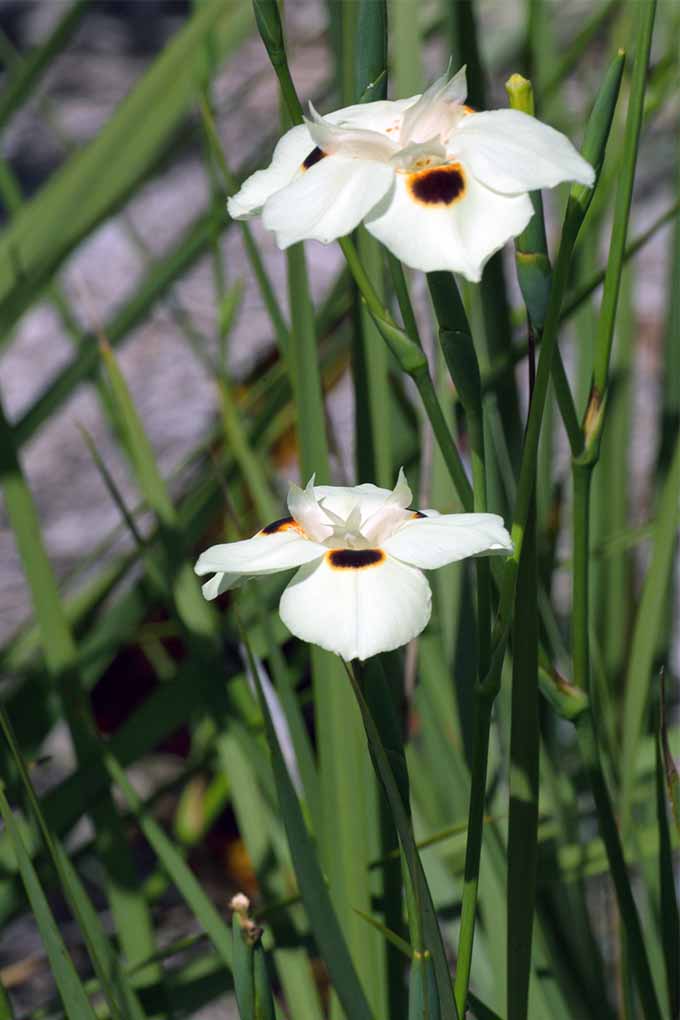
These plants were once classified in the genus Moraea but were kicked out because they have rhizomes, as opposed to Moraea, which have corms. Corms are a different type of underground plant stem, one that’s more bulbous.
All this is to say there are almost as many names for these long-leafed beauties as there are stars in the sky, so don’t be dismayed if you call them tomato and your neighbor calls them toe-mah-toe.
Herein, we’re referring to species in the genus Dietes, and you can apply the instructions below to plants commonly known as African iris, bicolor iris, fortnight lily, butterfly iris, Japanese iris, wood iris, and probably untold other nicknames.
Start with Routine Maintenance
On an as-needed basis, cut brown or yellow leaves back to the base of the greenery with pruning shears. Cut sharply and cleanly straight across the leaf blade, near the crown of the plant.
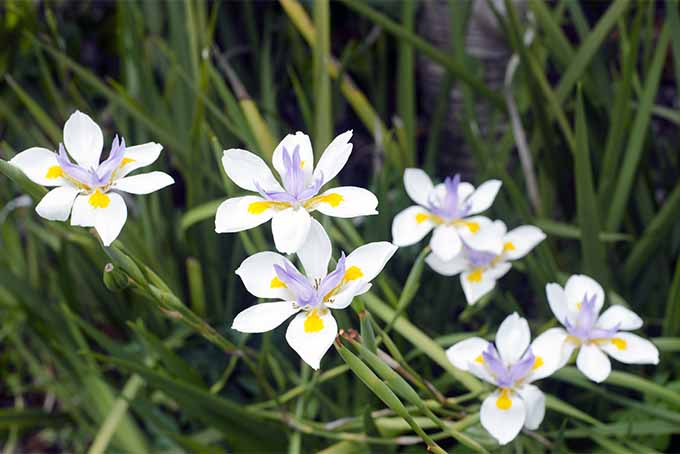
If you want to prevent the plant from self-seeding, cut just under the green seedpod with scissors to remove it.
You can pinch or clip spent blooms, but don’t remove a healthy-looking flower stalk. It will continue to produce many more blooms.
At some point, however, the flower stalk’s decline will become evident, and you can prune it back to the crown.
The Big Chop: Yes or No?
The short answer is yes, it’s perfectly okay to completely cut back your Dietes.
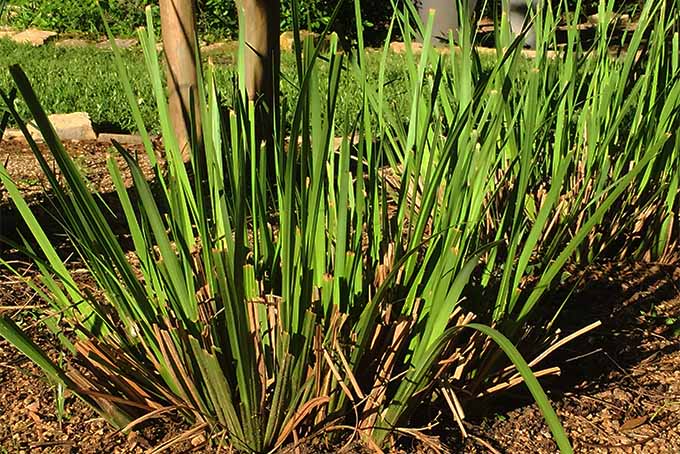
A wholesale cut, as you would do with ornamental grasses, is definitely in order if you’ve neglected your Dietes for several years and there are more brown and yellow leaves than green.
After cutting the entire plant back to ground level with hedge clippers, the plant will joyfully return to life, come springtime.
You’d preferably do this cutting in fall, but don’t sweat it if you’re unmotivated to get out there until the weather has warmed up.
Gardeners have waited well into spring, even when new growth was percolating, before bringing out the big guns and giving the plant a shave. And the plant has survived quite nicely.
It’s a good idea to thoroughly water these normally drought-tolerant plants after a haircut, and offer a balanced fertilizer with equal amounts of nitrogen, phosphorous and potassium to help promote new growth.
Sharpen Your Tools
So, in the midst of carefully pruning your crape myrtle trees and tending your winter lettuces, don’t forget to have a look at your grassy irises and assess whether they could use a little touch-up clipping, or perhaps even a wholesale cut back.
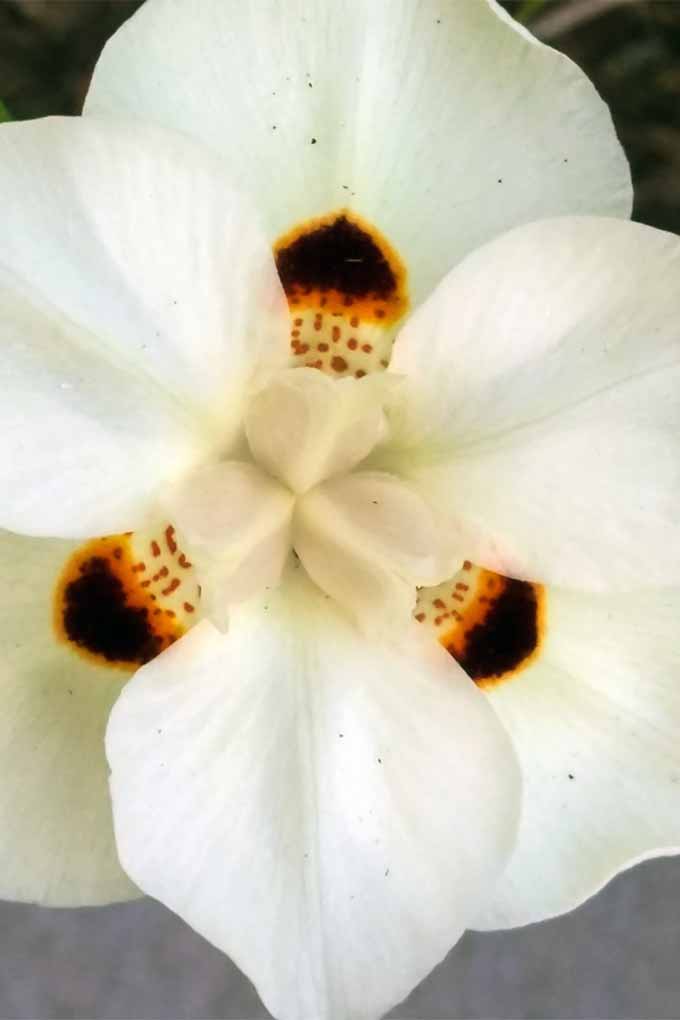
An abundance of fresh, green, spiky foliage will be your reward for a chop well done.
How do you care for your bicolor or African irises? Do you have another name for them? Tell us in the comments section below!
Pruning photo by Gretchen Heber, © Ask the Experts, LLC. ALL RIGHTS RESERVED. See our TOS for more details. Uncredited photos: Shutterstock.
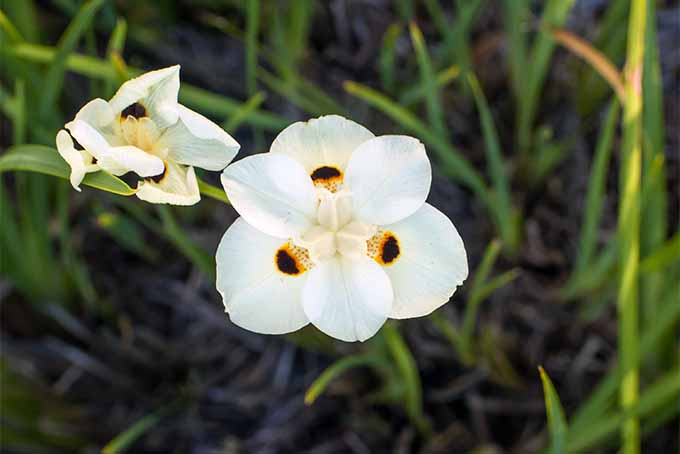
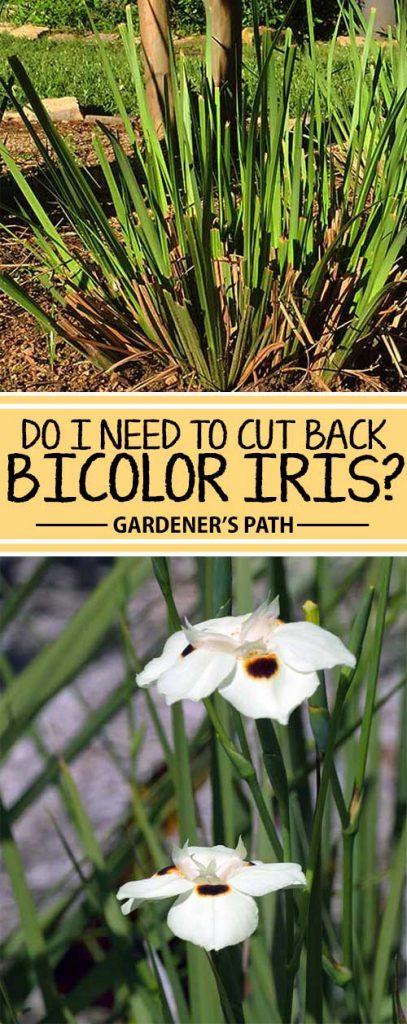
I have several Bicolor iris plants in my yard that have grown large and are looking tired. They are about 10 years old and i think i need to dig them up and divide them. Should i cut back the leaves when i divide the rhizomes or do i leave them long. Most are about 3 feet long. Please let me know any advice you have for me.
Thanks for your question, Ken. Leaves that have yellowed, withered, and turned brown should always be cut back on these plants, and division is an excellent choice every couple of years.
I’m not sure where you’re located, but division for rhizomes like these should typically be done in the late summer, or about a month after they’ve finished blooming. After you divide the plants, remove any unhealthy material and trim back the leaves to about 3 inches before planting. See the section on Rhizomes and Tubers in our “Complete Guide to Dividing Perennials” for more tips.
Thank you! Exactly what I needed to know! I’ve always loved these and after my complex finished landscaping, they tossed a number of two-gallon pots in the trash where they were continuing to grow and flower and had started to yellow. I rescued five of them and trimmed away all the yellow leaves, watered them generously and now they are wonderful filler around my larger patio plants. I also rescued a small flowering shrub that had started sprouting new leaves on the trash heap after a recent downpour. I love plants and it was like walking by a box of… Read more »
Free plants! These sound like gorgeous additions to your garden. 🙂
That’s a nice way of saving plants! I enjoy salvaging tubers, bulbs, etc…that have been tossed aside like an old shoe. So far I have one “bulb” that has excellent greenery but hasn’t blossomed yet. I enjoy just the green filler but if it blooms, we will enjoy the surprise! Barbarians beware ????
I live in Corpus Christi. Have several large healthy bicolor that need separating. I’m wondering if they do well in North Carolina, zone 7. Thought I’d take some to relatives if they would survive their winters.
You’re very thoughtful to want to share with your North Carolina family, Felcie, but I’m not sure they would survive the winters in zone 7.
I planted my bicolor a year ago, about Feb 2019 and have not had a single bloom. I notice on the esplanades they are blooming. They cut back the ones in the esplanades about Christmas. Is that what I should have done in order to get blooms?
Carol
Cutting them back is not required for them to bloom. But I’m not surprised they didn’t bloom the first year. Mine took about a year of “getting settled” before they rewarded with blooms. Let’s hope they show you their stuff this spring, Carol!
Thanks so much, that is what I wanted to hear.
We have two Peacock Flower plants (Dietes bicolor) for over a year (now about 4’) and have NEVER had a flower. Any ideas?
I have several bicolor iris planted in a planter near our house that faces west and gets full afternoon/ evening sun. They look very healthy and continue to thrive, but now in our third season we have not seen a single bloom! Any ideas?
Overwatering could be to blame- have you tried digging up some of the rhizomes to check on their condition? Check the planting area to make sure it has good drainage. You may also want to consider a soil test – an overabundance of nitrogen can sometimes lead to abundant and healthy foliage without flowers.
The builder planted these iris every where in the subdivision. Others are blooming like crazy, but mine are not. We’ve been in our house 3 years. What should I do?
Does the area get full sun, Merrill? I have had similar issues with coaxing these to bloom in the past in shaded areas of the garden. An overabundance of nitrogen could also be the culprit.
I came home 2 days ago and ALL of my flowers are GONE. It looks to me like someone clipped them and took them home. We do not have deer. Am I wrong? These two stems look like one has been snipped and the other fell off naturally. Help – do I have a flower thief? Or did they just fall off like that and it’s the first I’ve noticed. Help please!
Hi Kandi, Sorry we are a little slow getting back to you on your question. Whenever I have garden damage, I look for telltale signs like animal tracks, types of bites taken, etc. It looks like there might be grass around your plant, which would make it hard to distinguish tracks. I think you are right that deer aren’t the culprit because this plant is toxic and deer aren’t supposed to bother it – it’s supposed to be unpalatable to most animals. It might be possible that a person came along and snipped your flowers off – one of my… Read more »
Hi, I am in zone 13. Got Dietes Bicolor in spring in a 3.5-gal pot and have it in a full shade on my patio. Late spring-summer temp 100-115 so I figured it will just die in full sun so kept it in a shade. It progressively got worse. It was very green and full and now it is brownish and does not look good. Is it because of heat and now, in a fall with cooler temperatures will it get better and start flowering? I just do not understand its life cycle in our climate zone. Please help.
Hi Irina, Dietes Bicolor is supposed to do well in zones 9-11, so zone 13 is definitely outside of its preferred conditions. Also, it really prefers part shade to full shade, and may not ever flower in full shade. Do you have a spot that gets some sun early in the morning but is shady the rest of the day? I think moving it to a different location might help. Another thing you might want to consider is that this plant likes moist soil. Do you think it’s been getting enough water? After you try moving it to a location… Read more »
We have multiple bicolor irises in the front and back of our house, all in varying degrees of shade and sun. All of them are ‘lying down’. None have bloomed this year. We live in the central Texas area. We’ve never had this happen before and we’ve had them for years. There are no brown or yellow leaves, just the plants are all bending to the ground. Any thoughts on what is causing this? Thanks!
Hi Christi, You have a mystery on your hands! I’m going to offer some ideas for you to consider – maybe one of them will help you solve it. My first thought was to ask you if you’d had any more or less rain or heat than usual this year, but I think either of those issues would result in leaf discoloration. My next thought is that something may be going on underground. I think if I were you I would try digging one of your plants up to inspect its rhizomes. Iris borers can cause iris foliage to wilt,… Read more »